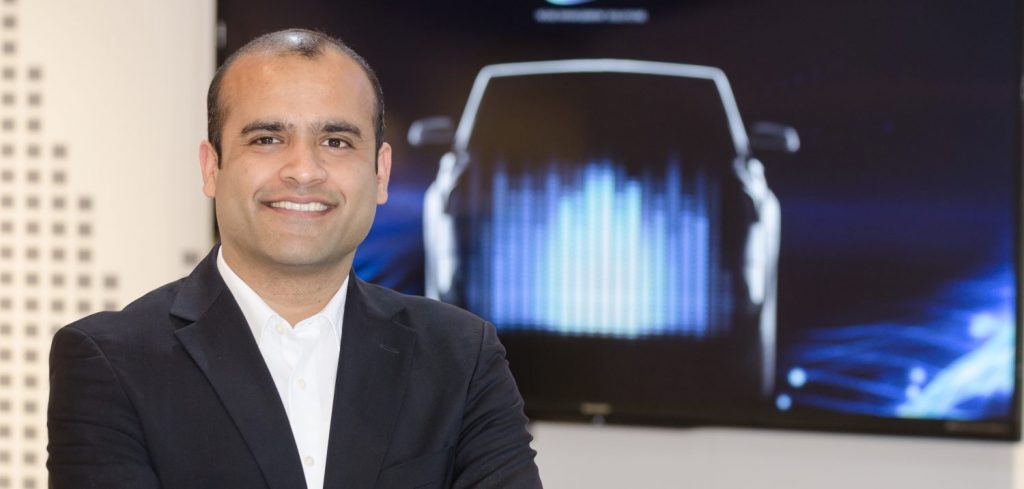In-car audio was once confined to a head unit and speaker system, but these days it is about so much more; ADAS, synthesized engine sounds and sound/noise management are just some examples. Increasingly, multiple departments and engineers now need to be involved in the curation of the perfect audio system. Given the increasingly complex process, how can OEMs, Tier 1s and other suppliers ensure efficient and innovative collaboration? Automotive Interiors World spoke to Rajus Augustine, senior director product strategy and planning, Car Audio SBU, Harman, to discuss how the answer might lie in the company’s open and collaborative development platform, AudioworX.
The audio we experience in the car is no longer confined to the music we listen to. How far reaching is the current scope?
Audio design has so much potential. Imagine, for instance, a toy box filled with blocks of different sizes, colors and shapes. These blocks can fit together in a multitude of different ways to create detailed and creative forms. This very same principle can apply to the design of in-car audio, with multiple components coming together to achieve new and improved consumer experiences.
For instance, do you remember when you first heard an electric vehicle (EV) pass you by? The sound it emits is different, sure, but the most important thing is, we can still hear it. These external engine sounds are developed and added in to ensure the safety of pedestrians and other road users alike, as well as to offer some cohesion with the more traditional experiences of driving. It is not just adding in sounds that has become a more regular design feature in recent years. Noise management solutions, such as Road Noise Cancellation, look to lessen the external sound of the engine and road, for a smoother and more comfortable driving experience. That is not to say that users are keen for their driving experience to be entirely quiet, quite the opposite. In fact, the in-vehicle acoustics are now, arguably, more important than ever. Research by IHS Markit has revealed that 73% of consumers say that if a car has a branded audio system then this can impact their decision making.
Can you outline the additional challenges this causes for OEMs?
The requirements for in-car audio are now far more advanced and more complex. This can present interesting challenges for our industry. For instance, every one of the examples just mentioned could be developed by completely different departments yet use the same system hardware. A car’s active noise management solution might be tuned by an OEM’s NVH department, while its branded audio system Tier 1 supplier could be tuning unique audio features, such as Virtual Venues, at a completely different location. However, by the time it reaches the final system set up in the car, these features will share a microphone. Each team will be pushing itself to create the best possible experience, but face challenges in coordinating the microphone location and aligning on headroom availability. These requirements go far beyond the traditional audio team. It is possible that any product engineer may now need to work on, and want to unlock, new audio experiences in the car.
It was these pain points that inspired our team to think how we could enable engineers to work together creatively and seamlessly, while still weaving magic into their creations. AudioworX is the result.
How does AudioworX provide an opportunity for OEMs to collaborate with partners?
It is an open-framework audio feature development platform that enables product engineers to create and unlock new audio experiences in the car. OEMs and Tier 1 suppliers can use the platform to develop new in-cabin experiences using their own propriety software solutions, third party solutions or Harman audio features. Importantly, it enables everyone on a project to engage in distributed tuning – be that through multiple audio devices inside one car or across multiple teams. This distributed tuning is essential in a world in which audio is now about so much more than just traditional sound systems.
The platform is designed with its users in mind and backed up with decades of Harman experience in the design, development and deployment of branded audio experiences. As such, this means that the system is as flexible as possible, intuitive and easy to use. OEMs and Tier 1s can develop their own features and also link third-party features in the AudioworX signal flow designer. For OEMs, access to such a system is vital in enabling them to provide an audio experience that is enriching and trusted, that then becomes an integral part of the OEM audio system’s brand promise. Not only can it help our customers to offer audio features at will, across numerous devices and spanning multiple architectural generations, it also offers myriad new opportunities.
The entire industry is transitioning from ‘revolutions per minute’ to ‘experiences per mile’ and we at Harman want to be at the heart of helping achieve this. So, that’s why AudioworX is an open platform available to anyone who wants to use it. Here, we are considering not just our OEM partners but also Tier 1 or Tier 2 suppliers and beyond, as well as a new breed of customers, such as third party audio feature suppliers and chip vendors.
Ultimately, for this industry to keep excelling, open and creative collaboration is essential. As the demands of in-car audio continue to increase, it’s important that we keep pushing to ensure that multiple teams are not hamstrung by the many demands of cross-departmental collaboration.



